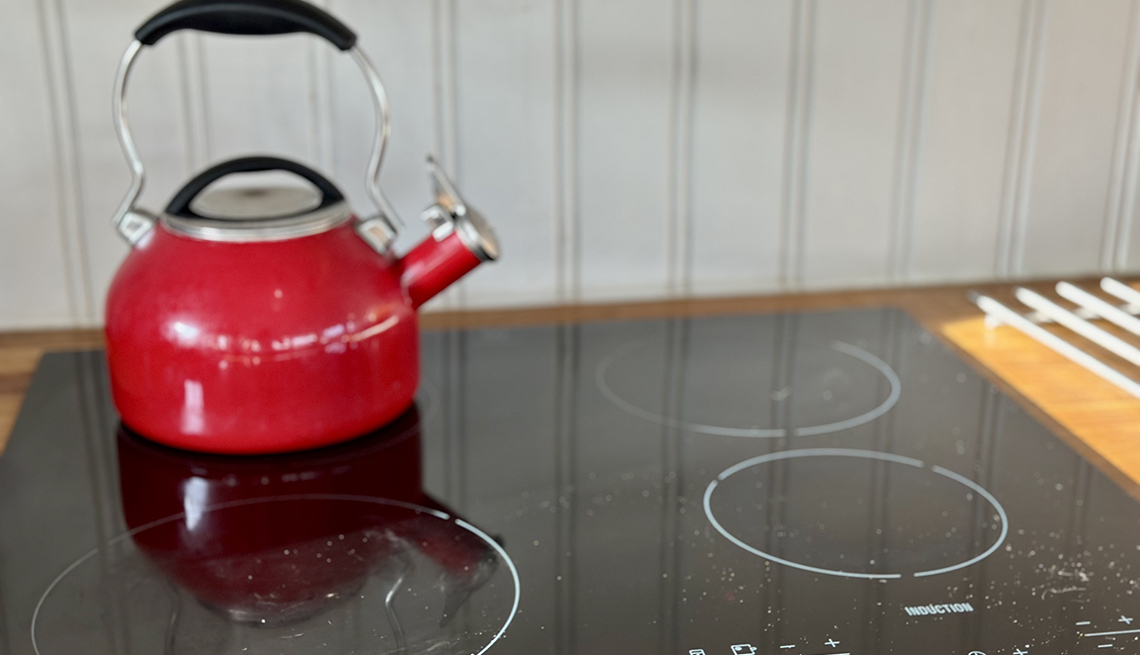
Is it time to switch to an induction stove?
- Select a language for the TTS:
- UK English Female
- UK English Male
- US English Female
- US English Male
- Australian Female
- Australian Male
- Language selected: (auto detect) - EN
Play all audios:

Induction technology is more efficient because 90 percent of the energy it uses is transferred to heating the food, versus 74 percent for traditional electric stovetops and a meager 40
percent for gas, according to findings published in the American Council for an Energy-Efficient Economy’s “Summer Study on Energy Efficiency in Buildings.” That means less heat escapes
into the kitchen, which in turn reduces the need for expensive air conditioning. The safety aspects eliminate the dangers associated with forgetfully leaving a cooktop on. CLEANING On the
purely convenience side, cleaning up after induction cooking is easier than with gas or electric. On gas stoves, you have the spills that have to be retrieved after you’re done, waiting for
the grill to cool and scrubbing the surface and grill. See more Home & Technology offers > Electric smoothtops are arguably worse. Spills burn into the hot cooking surface and have
to be carefully cleaned later using special cleaners to avoid scratching the surface and damaging its heating abilities. Induction elements don’t present cooks with the same challenges.
Holyoak points out that if a pot boils over or spills, food will not get burned into the induction surface because it never gets that hot, making cleanups fast and easy. POTS AND PANS One
other thing to consider: You might have to invest in new cookware if you switch to induction. Though induction cooktops work with most pots and pans, they do not work with all cookware. The
metal in the cookware has to contain magnetic ferrous material. Cast-iron fry pans and Dutch ovens work perfectly, as do most stainless steel pieces. Pure copper pans and aluminum pots do
not. “I had a couple of nonstick pans that did not work,” said Jeff Sigelbaum of New York City, an experienced cook and foodie who switched to induction when the gas was shut off in his
co-op, “and one pan that had warped a bit over the years would not work at all on the induction.” Pans need to have a flat bottom and be magnetic. Sigelbaum said he used a magnet to test all
of his pots and pans, and Holyoak agrees that’s a great way to do it. It can also reveal which pots have a fully magnetic base plate rather than just a small center area that’s magnetic.
If only a small area of a pot’s bottom is magnetic, that can create a cooking hot spot, which will tend to burn food in the center of the pan. If you have to get new cookware,
induction-compatible models are available in a variety of styles and price ranges that are comparable to traditional cookware. THE COST The main reason many people may be hesitant to switch
to induction is the perceived expense. But depending on your situation, the cost versus a regular stove replacement may be minimal — or several hundred dollars. First, there’s the price of
the ranges themselves. Induction models used to command a price premium over regular electric and gas stoves, but that is gradually changing. A 6-cubic-foot gas range from Samsung (Model
NX60A6511SS/AA) with a convection oven and air fryer is $800 in retail, compared with $1,485 for a 6.3-cubic-foot induction range from Samsung (Model NE63B8211SS/AA). However, you can save
by buying a basic bare-bones electric stove, such as a 6.3-cubic-foot Samsung glass top (Model NE63A6511SS/AA) for $990. Even if an induction stove is priced close to a gas or electric
stove, you have to consider what the installation might cost. If you are switching out an electric stove, the expense may be minimal. Induction stoves require a 240-volt outlet (40 or 50
amps at the circuit box), but so do most electric stoves, so no additional work may be required.
